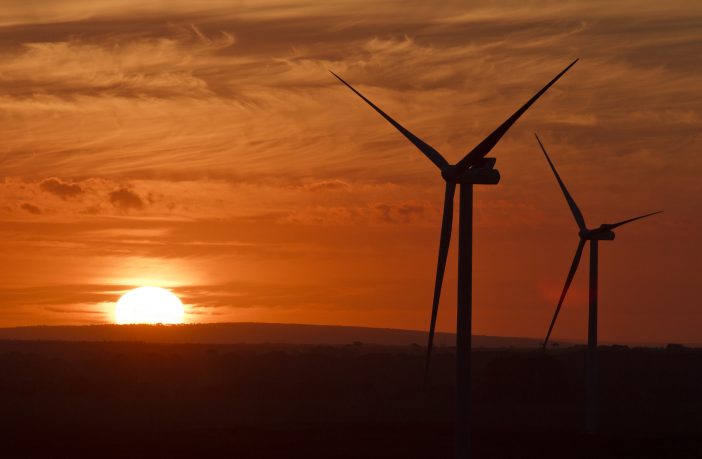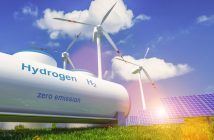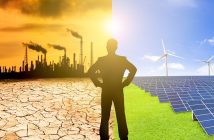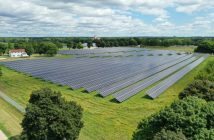Opinion
- We have a six-month window to get the global green recovery underway.
- It is vital that governments begin investment programmes in renewable energy now.
- Doing so will reap significant economic as well as environmental dividends.
There is broad consensus that wind and other source of renewable energy can play an important role in helping economies to stimulate economic recovery in the wake of the COVID-19 pandemic, as reflected in the slogan ‘Build Back Better’.
But governments so far have been slow to introduce concrete measures to promote a green recovery, and the measures that have been taken vary wildly by region and country. Failure to act promptly risks missing this opportunity to unlock hundreds of billions of dollars in investment in the energy sector, while the world heads into a deeper-than-necessary economic recession.
Six months is the window of time window within which we have to act, according to the recent special report from the International Energy Agency (IEA). This means that sustainable recovery packages agreed from now until the end of the year will determine the degree of economic and carbon rebound for the next three years – and the course of the global economy through 2050.
The COVID-19 outbreak seems to have left world leaders shell-shocked. Governments are focused on confronting a crisis which has taken healthcare and welfare systems to the brink. Key international forums such as COP26, the G20 and the G7 have been postponed or shortened to a few virtual speeches. Meanwhile, political divisions and distrust have severely handicapped the ability of international institutions to respond to the crisis.
A concerted approach has begun to emerge, such as the planned €750 billion ($846 billion) EU economic recovery package, which singles out support for wind energy as one of the ‘policy fundamentals’ of green recovery. But even this falls short of the immediate effective policy changes which could allow a big ramp-up in investment – and gives plenty of room for national governments to ignore clear bottlenecks to the deployment of renewables or to introduce unhelpful policy changes.
G7 nations, responsible for one-third of global GDP, have implemented individual stimulus packages totalling $6.3 trillion – a figure that doesn’t even include the EU package mentioned above. But measures to accelerate renewables are often absent or of relatively minor importance. This needs to change – and fast.
Green recovery measures must accelerate quickly
Demand for oil, gas, coal and nuclear energy will fall off a cliff in 2020, while demand for renewables will increase modestly. It’s vital that governments promote investment in sectors that can and should continue to grow, or we risk creating a negative ripple effect in the energy sector which will throttle investment and exacerbate the recessionary impact of COVID-19 on the wider economy.
The green recovery must happen now to be effective, according to the IEA: Investing $180 billion annually over the next three years to deploy wind and renewable energy could generate huge economic value over the next 25 years, due to short construction times and declining technology costs. Nearly 7 million jobs could be created in construction, manufacturing, operations and maintenance, and the IMF estimates these and other measures put in place for a sustainable recovery could boost global GDP by 3.5% in 2023 above usual levels.
The vacuum of in-person intergovernmental meetings will slowly be overcome in the coming months, with a series of economic and political forums planned. But it will take extra effort for leaders to coordinate their recovery agendas for maximum impact, at a time when multilateral cooperation is more urgent than ever.
The COVID-19 pandemic has demonstrated how governments in almost every country can take decisive action to keep economic life going when faced with a global crisis; now they need to act equally decisively to deal with the climate crisis and transform our energy sectors for good.

Climate action makes economic sense
Climate change is at the very heart of the social, economic and security issues which determine global development. There are positive signs that the momentum around climate action before the pandemic continues to resonate with the public. Polls show that globally, 71% of people believe that the climate crisis is as serious as the pandemic, and a majority in every country want a green economic recovery.
Green recovery is logical in the long run: $1 spent to advance the global energy transition returns $3-8, according to the International Renewable Energy Agency. Studies show that clean energy infrastructure construction generates twice as many jobs per $1 million spent as fossil fuel projects.
Wind power has already proven itself as a clean, scalable and affordable renewable energy source around the world. In the past five years, global investment in new onshore and offshore wind energy capacity surpassed $652 billion, and is set to accelerate towards 2030.
What’s the World Economic Forum doing about the transition to clean energy?
The road to recovery will be dotted with virtual conferences and postponed meetings. But that should not stop the world’s most advanced economies from demonstrating coordinated leadership to put climate action at the heart of their proposals. To do so, they should recognise the enormous potential for wind power and other forms of renewable energy to drive sustainable jobs, investment and development around the world.
Author: World Economic Forum
Disclaimer: The articles expressed in this publication are those of the authors. They do not purport to reflect the opinions or views of Green Building Africa, our staff or our advertisers. The designations employed in this publication and the presentation of material therein do not imply the expression of any opinion whatsoever on the part Green Building Africa concerning the legal status of any country, area or territory or of its authorities.











